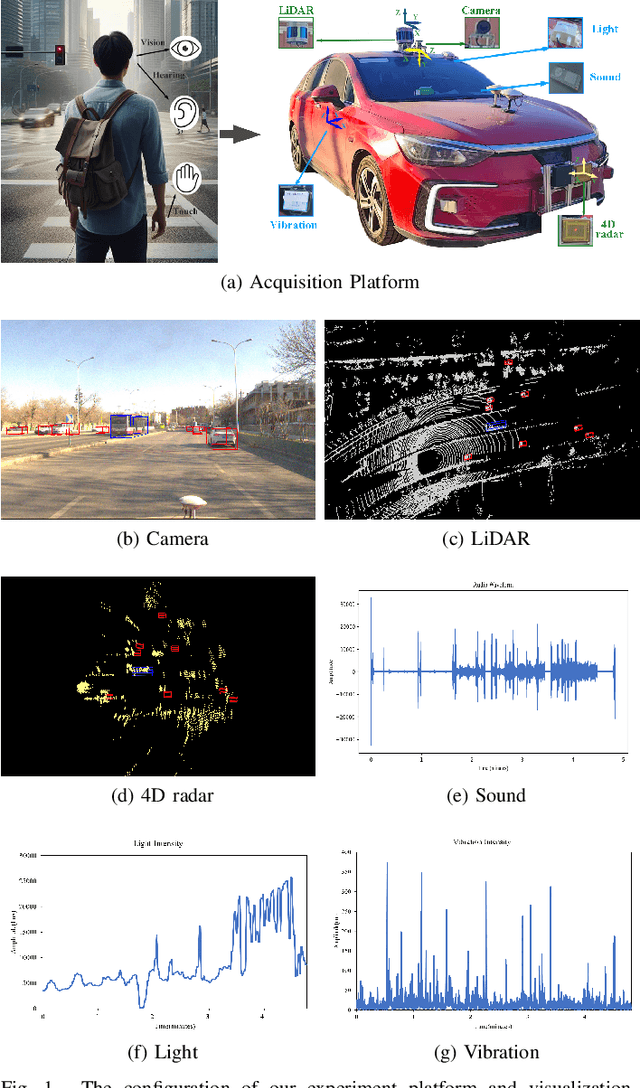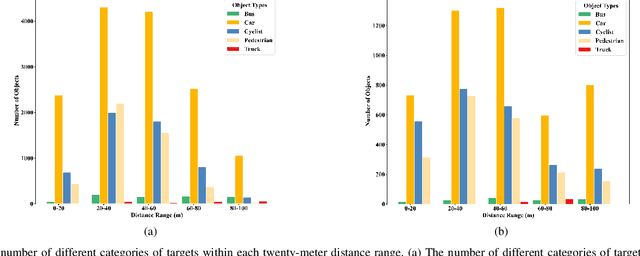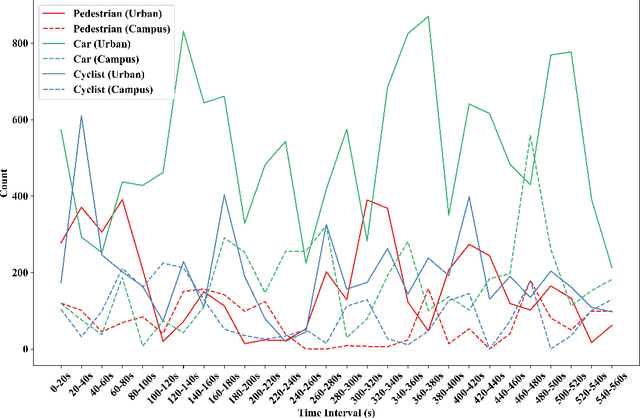Zhiwei Li
Encouraging Good Processes Without the Need for Good Answers: Reinforcement Learning for LLM Agent Planning
Aug 27, 2025Abstract:The functionality of Large Language Model (LLM) agents is primarily determined by two capabilities: action planning and answer summarization. The former, action planning, is the core capability that dictates an agent's performance. However, prevailing training paradigms employ end-to-end, multi-objective optimization that jointly trains both capabilities. This paradigm faces two critical challenges: imbalanced optimization objective allocation and scarcity of verifiable data, making it difficult to enhance the agent's planning capability. To address these challenges, we propose Reinforcement Learning with Tool-use Rewards (RLTR), a novel framework that decouples the training process to enable a focused, single-objective optimization of the planning module. Crucially, RLTR introduces a reward signal based on tool-use completeness to directly evaluate the quality of tool invocation sequences. This method offers a more direct and reliable training signal than assessing the final response content, thereby obviating the need for verifiable data. Our experiments demonstrate that RLTR achieves an 8%-12% improvement in planning performance compared to end-to-end baselines. Moreover, this enhanced planning capability, in turn, translates to a 5%-6% increase in the final response quality of the overall agent system.
Learn to Preserve Personality: Federated Foundation Models in Recommendations
Jun 13, 2025Abstract:A core learning challenge for existed Foundation Models (FM) is striking the tradeoff between generalization with personalization, which is a dilemma that has been highlighted by various parameter-efficient adaptation techniques. Federated foundation models (FFM) provide a structural means to decouple shared knowledge from individual specific adaptations via decentralized processes. Recommendation systems offer a perfect testbed for FFMs, given their reliance on rich implicit feedback reflecting unique user characteristics. This position paper discusses a novel learning paradigm where FFMs not only harness their generalization capabilities but are specifically designed to preserve the integrity of user personality, illustrated thoroughly within the recommendation contexts. We envision future personal agents, powered by personalized adaptive FMs, guiding user decisions on content. Such an architecture promises a user centric, decentralized system where individuals maintain control over their personalized agents.
Scientists' First Exam: Probing Cognitive Abilities of MLLM via Perception, Understanding, and Reasoning
Jun 12, 2025Abstract:Scientific discoveries increasingly rely on complex multimodal reasoning based on information-intensive scientific data and domain-specific expertise. Empowered by expert-level scientific benchmarks, scientific Multimodal Large Language Models (MLLMs) hold the potential to significantly enhance this discovery process in realistic workflows. However, current scientific benchmarks mostly focus on evaluating the knowledge understanding capabilities of MLLMs, leading to an inadequate assessment of their perception and reasoning abilities. To address this gap, we present the Scientists' First Exam (SFE) benchmark, designed to evaluate the scientific cognitive capacities of MLLMs through three interconnected levels: scientific signal perception, scientific attribute understanding, scientific comparative reasoning. Specifically, SFE comprises 830 expert-verified VQA pairs across three question types, spanning 66 multimodal tasks across five high-value disciplines. Extensive experiments reveal that current state-of-the-art GPT-o3 and InternVL-3 achieve only 34.08% and 26.52% on SFE, highlighting significant room for MLLMs to improve in scientific realms. We hope the insights obtained in SFE will facilitate further developments in AI-enhanced scientific discoveries.
S2R-Bench: A Sim-to-Real Evaluation Benchmark for Autonomous Driving
May 24, 2025Abstract:Safety is a long-standing and the final pursuit in the development of autonomous driving systems, with a significant portion of safety challenge arising from perception. How to effectively evaluate the safety as well as the reliability of perception algorithms is becoming an emerging issue. Despite its critical importance, existing perception methods exhibit a limitation in their robustness, primarily due to the use of benchmarks are entierly simulated, which fail to align predicted results with actual outcomes, particularly under extreme weather conditions and sensor anomalies that are prevalent in real-world scenarios. To fill this gap, in this study, we propose a Sim-to-Real Evaluation Benchmark for Autonomous Driving (S2R-Bench). We collect diverse sensor anomaly data under various road conditions to evaluate the robustness of autonomous driving perception methods in a comprehensive and realistic manner. This is the first corruption robustness benchmark based on real-world scenarios, encompassing various road conditions, weather conditions, lighting intensities, and time periods. By comparing real-world data with simulated data, we demonstrate the reliability and practical significance of the collected data for real-world applications. We hope that this dataset will advance future research and contribute to the development of more robust perception models for autonomous driving. This dataset is released on https://github.com/adept-thu/S2R-Bench.
MMTL-UniAD: A Unified Framework for Multimodal and Multi-Task Learning in Assistive Driving Perception
Apr 03, 2025Abstract:Advanced driver assistance systems require a comprehensive understanding of the driver's mental/physical state and traffic context but existing works often neglect the potential benefits of joint learning between these tasks. This paper proposes MMTL-UniAD, a unified multi-modal multi-task learning framework that simultaneously recognizes driver behavior (e.g., looking around, talking), driver emotion (e.g., anxiety, happiness), vehicle behavior (e.g., parking, turning), and traffic context (e.g., traffic jam, traffic smooth). A key challenge is avoiding negative transfer between tasks, which can impair learning performance. To address this, we introduce two key components into the framework: one is the multi-axis region attention network to extract global context-sensitive features, and the other is the dual-branch multimodal embedding to learn multimodal embeddings from both task-shared and task-specific features. The former uses a multi-attention mechanism to extract task-relevant features, mitigating negative transfer caused by task-unrelated features. The latter employs a dual-branch structure to adaptively adjust task-shared and task-specific parameters, enhancing cross-task knowledge transfer while reducing task conflicts. We assess MMTL-UniAD on the AIDE dataset, using a series of ablation studies, and show that it outperforms state-of-the-art methods across all four tasks. The code is available on https://github.com/Wenzhuo-Liu/MMTL-UniAD.
A Tutorial of Personalized Federated Recommender Systems: Recent Advances and Future Directions
Dec 11, 2024Abstract:Personalization stands as the cornerstone of recommender systems (RecSys), striving to sift out redundant information and offer tailor-made services for users. However, the conventional cloud-based RecSys necessitates centralized data collection, posing significant risks of user privacy breaches. In response to this challenge, federated recommender systems (FedRecSys) have emerged, garnering considerable attention. FedRecSys enable users to retain personal data locally and solely share model parameters with low privacy sensitivity for global model training, significantly bolstering the system's privacy protection capabilities. Within the distributed learning framework, the pronounced non-iid nature of user behavior data introduces fresh hurdles to federated optimization. Meanwhile, the ability of federated learning to concurrently learn multiple models presents an opportunity for personalized user modeling. Consequently, the development of personalized FedRecSys (PFedRecSys) is crucial and holds substantial significance. This tutorial seeks to provide an introduction to PFedRecSys, encompassing (1) an overview of existing studies on PFedRecSys, (2) a comprehensive taxonomy of PFedRecSys spanning four pivotal research directions-client-side adaptation, server-side aggregation, communication efficiency, privacy and protection, and (3) exploration of open challenges and promising future directions in PFedRecSys. This tutorial aims to establish a robust foundation and spark new perspectives for subsequent exploration and practical implementations in the evolving realm of RecSys.
MIPD: A Multi-sensory Interactive Perception Dataset for Embodied Intelligent Driving
Nov 08, 2024



Abstract:During the process of driving, humans usually rely on multiple senses to gather information and make decisions. Analogously, in order to achieve embodied intelligence in autonomous driving, it is essential to integrate multidimensional sensory information in order to facilitate interaction with the environment. However, the current multi-modal fusion sensing schemes often neglect these additional sensory inputs, hindering the realization of fully autonomous driving. This paper considers multi-sensory information and proposes a multi-modal interactive perception dataset named MIPD, enabling expanding the current autonomous driving algorithm framework, for supporting the research on embodied intelligent driving. In addition to the conventional camera, lidar, and 4D radar data, our dataset incorporates multiple sensor inputs including sound, light intensity, vibration intensity and vehicle speed to enrich the dataset comprehensiveness. Comprising 126 consecutive sequences, many exceeding twenty seconds, MIPD features over 8,500 meticulously synchronized and annotated frames. Moreover, it encompasses many challenging scenarios, covering various road and lighting conditions. The dataset has undergone thorough experimental validation, producing valuable insights for the exploration of next-generation autonomous driving frameworks.
Personalized Item Representations in Federated Multimodal Recommendation
Oct 14, 2024



Abstract:Federated recommendation systems are essential for providing personalized recommendations while protecting user privacy. However, current methods mainly rely on ID-based item embeddings, neglecting the rich multimodal information of items. To address this, we propose a Federated Multimodal Recommendation System, called FedMR. FedMR uses a foundation model on the server to encode multimodal item data, such as images and text. To handle data heterogeneity caused by user preference differences, FedMR introduces a Mixing Feature Fusion Module on each client, which adjusts fusion strategy weights based on user interaction history to generate personalized item representations that capture users' fine-grained preferences. FedMR is compatible with existing ID-based federated recommendation systems, improving performance without modifying the original framework. Experiments on four real-world multimodal datasets demonstrate FedMR's effectiveness. The code is available at https://anonymous.4open.science/r/FedMR.
Personalized Item Embeddings in Federated Multimodal Recommendation
Oct 11, 2024



Abstract:Federated recommendation systems play a crucial role in protecting user privacy. However, existing methods primarily rely on ID-based item embeddings, overlooking the rich multimodal information of items. To address this limitation, we propose a novel Federated Multimodal Recommendation System called FedMR. FedMR leverages a foundation model on the server side to encode multimodal data, such as images and text, associated with items. To tackle the challenge of data heterogeneity caused by varying user preferences, FedMR introduces a Mixing Feature Fusion Module on the client. This module dynamically adjusts the weights of different fusion strategies based on user interaction history, generating personalized item embeddings that capture fine-grained user preferences. FedMR is compatible with existing ID-based federated recommendation systems, improving their performances without modifying the original framework. Our experiments on four real-world multimodal recommendation datasets demonstrate the effectiveness of FedMR. Our code is available at https://anonymous.4open.science/r/FedMR.
Personalized Federated Collaborative Filtering: A Variational AutoEncoder Approach
Aug 16, 2024Abstract:Federated Collaborative Filtering (FedCF) is an emerging field focused on developing a new recommendation framework with preserving privacy in a federated setting. Existing FedCF methods typically combine distributed Collaborative Filtering (CF) algorithms with privacy-preserving mechanisms, and then preserve personalized information into a user embedding vector. However, the user embedding is usually insufficient to preserve the rich information of the fine-grained personalization across heterogeneous clients. This paper proposes a novel personalized FedCF method by preserving users' personalized information into a latent variable and a neural model simultaneously. Specifically, we decompose the modeling of user knowledge into two encoders, each designed to capture shared knowledge and personalized knowledge separately. A personalized gating network is then applied to balance personalization and generalization between the global and local encoders. Moreover, to effectively train the proposed framework, we model the CF problem as a specialized Variational AutoEncoder (VAE) task by integrating user interaction vector reconstruction with missing value prediction. The decoder is trained to reconstruct the implicit feedback from items the user has interacted with, while also predicting items the user might be interested in but has not yet interacted with. Experimental results on benchmark datasets demonstrate that the proposed method outperforms other baseline methods, showcasing superior performance.
 Add to Chrome
Add to Chrome Add to Firefox
Add to Firefox Add to Edge
Add to Edge